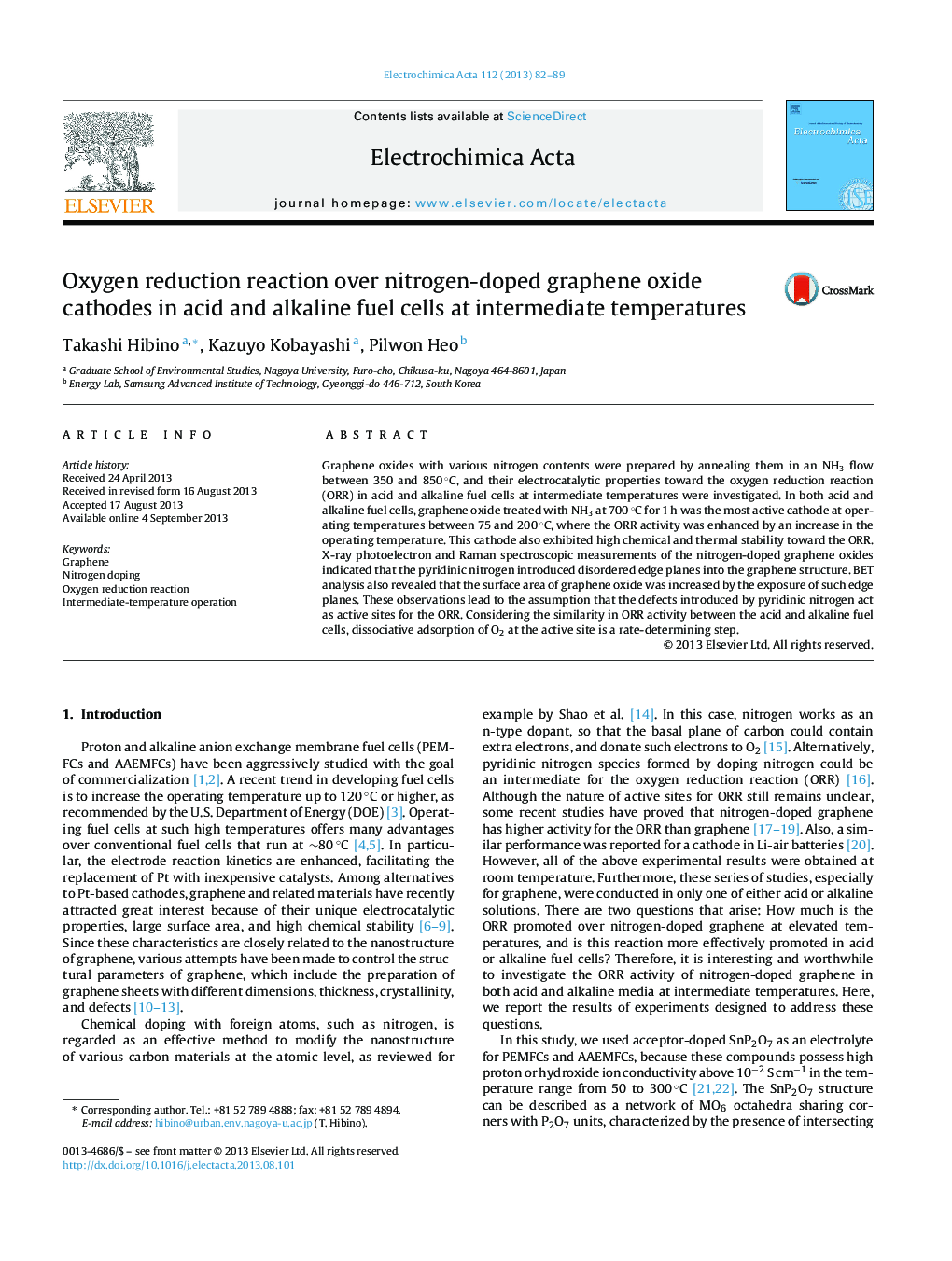| Article ID | Journal | Published Year | Pages | File Type |
|---|---|---|---|---|
| 6614689 | Electrochimica Acta | 2013 | 8 Pages |
Abstract
Graphene oxides with various nitrogen contents were prepared by annealing them in an NH3 flow between 350 and 850 °C, and their electrocatalytic properties toward the oxygen reduction reaction (ORR) in acid and alkaline fuel cells at intermediate temperatures were investigated. In both acid and alkaline fuel cells, graphene oxide treated with NH3 at 700 °C for 1 h was the most active cathode at operating temperatures between 75 and 200 °C, where the ORR activity was enhanced by an increase in the operating temperature. This cathode also exhibited high chemical and thermal stability toward the ORR. X-ray photoelectron and Raman spectroscopic measurements of the nitrogen-doped graphene oxides indicated that the pyridinic nitrogen introduced disordered edge planes into the graphene structure. BET analysis also revealed that the surface area of graphene oxide was increased by the exposure of such edge planes. These observations lead to the assumption that the defects introduced by pyridinic nitrogen act as active sites for the ORR. Considering the similarity in ORR activity between the acid and alkaline fuel cells, dissociative adsorption of O2 at the active site is a rate-determining step.
Related Topics
Physical Sciences and Engineering
Chemical Engineering
Chemical Engineering (General)
Authors
Takashi Hibino, Kazuyo Kobayashi, Pilwon Heo,
